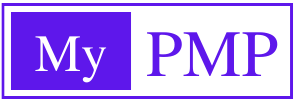Project Management Artifacts
Project management artefacts are the papers and products that are made throughout the project process to help with planning, executing, tracking, and managing a project. These project artefacts are a way to record and share information about the project, such as its scope, objectives, timelines, costs, risks, and progress.
Some common artefacts of project management are:
Project Charter: A high-level statement that describes the project’s goals, boundaries, partners, risks, assumptions, and limits.
Work Breakdown Structure (WBS) is a way to divide the scope of a job into smaller, easier-to-handle parts.
A project schedule is a plan that shows the major steps, actions, and dates of the project.
A project budget is a thorough estimate of all the costs of the project, such as labor, materials, tools, and extra costs.
Requirements Document: A statement of the project’s functional and non-functional needs.
Risk Management Plan: A plan that lists possible risks to the project, evaluates how likely they are and how bad they could be, and lays out ways to deal with or reduce them.
Quality Management Plan: A plan that describes the project’s quality goals, standards, and methods for making sure that the results meet customer expectations.
Stakeholder Management Plan: A plan that lists the project’s most important partners and how to work with and talk to them.
Change Management Plan: A plan that shows how changes to the project’s scope, schedule, or money will be handled.
Status reports are regular updates that let partners know about the project’s progress, achievements, and problems.
Project management artefacts are a record of what the project did and what choices were made. They also help make sure that everyone involved in the project is on the same page. They also make it possible to keep track of how the project is going and make choices about where it should go in the future.








